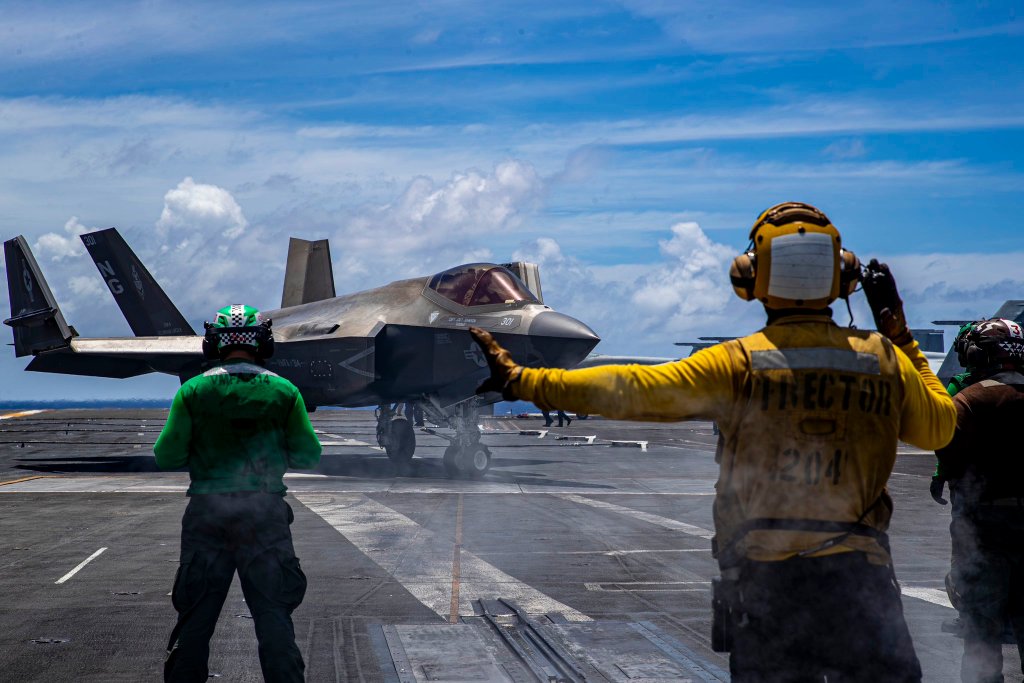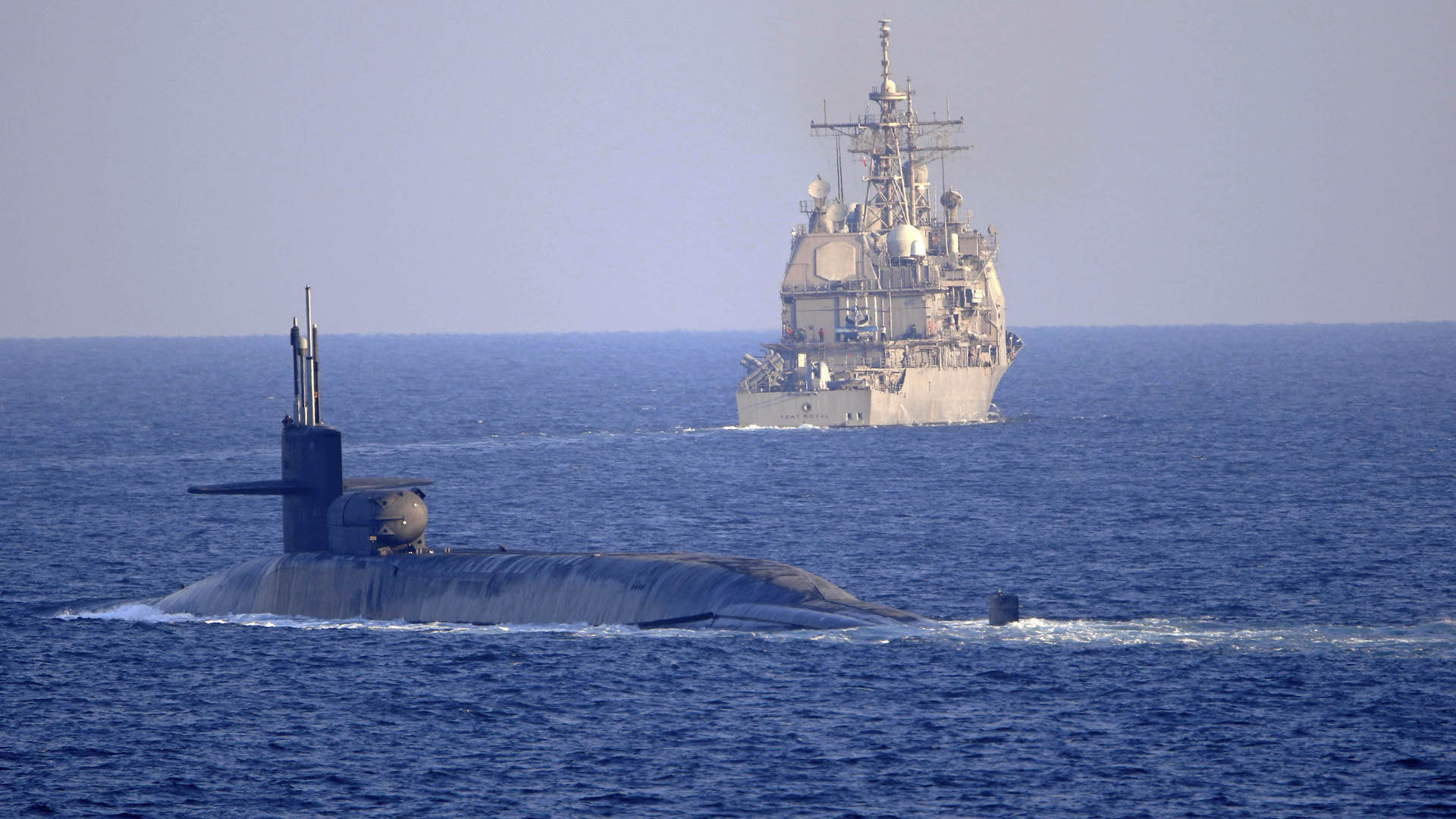The U.S. Navy has publicly announced the transit of USS Georgia, one of its four Ohio class guided-missile submarines, or SSGNs, to the Middle East, amid mounting concerns that Iran and its proxies are poised to retaliate for Israel’s assassination of Hamas political leader Ismail Haniyeh, in Tehran. The movement of the submarine comes at the same time as the U.S. Navy accelerates the movement of the supercarrier USS Abraham Lincoln to the region, with plans now for two carrier strike groups to be present there soon.

“Secretary Austin reiterated the United States’ commitment to take every possible step to defend Israel and noted the strengthening of U.S. military force posture and capabilities throughout the Middle East in light of escalating regional tensions,” the U.S. Department of Defense said in a statement.
That statement followed a conversation yesterday between U.S. Defense Secretary Lloyd Austin and his Israeli counterpart Yoav Gallant. During that call, Gallant reportedly told Austin that Iran was preparing for a large-scale military attack on Israel within days.
Following the meeting, the Israeli Ministry of Defense issued a statement confirming the call took place and that Gallant and Austin had discussed operational and strategic coordination as well as the Israeli military’s readiness to respond to Iranian threats.
The United States was already actively building up its military presence in the region to help defend Israel against any potential Iranian attack.
As well as additional combat aircraft and warships headed to the Middle East, the Pentagon confirmed today that the deployment of the USS Abraham Lincoln and its carrier strike group to the region was now being accelerated on Austin’s orders.
Earlier this month, the Department of Defense had said that the USS Abraham Lincoln was headed from the Pacific to the Middle East for a scheduled deployment to replace the USS Theodore Roosevelt. The Pentagon now says that the Abraham Lincoln will provide additional capability, with the Theodore Roosevelt remaining in the Middle East. The air wing of the Abraham Lincoln includes F-35C stealth fighters and EA-18G Growlers carrying a new generation of electronic warfare pods, making the most capable to ever deploy. You can read more about this in our previous feature linked here.
The deployment of USS Georgia, meanwhile, had not previously been announced. The presence of the SSGN in the region sends a powerful signal to Tehran, as well as significantly boosting long-range conventional strike capabilities there.
The SSGN has the ability to carry up to 154 Tomahawk land-attack cruise missiles, although typically only around 100 of these weapons will be carried. At the same time, the SSGN is a multi-mission platform that can also clandestinely deploy dozens of special operations forces and other highly specialized equipment, including various unmanned platforms, as well as serving as discreet underwater intelligence fusion nodes and command centers.
Other U.S. Navy warships are headed to the Middle East, including the Arleigh Burke class destroyer USS Laboon, which has moved into the eastern Mediterranean Sea after transiting the Suez Canal from the Red Sea. As well as the aforementioned USS Theodore Roosevelt, it joins another Arleigh Burke class destroyer, USS Bulkeley, and an amphibious task force headed up by the assault ship USS Wasp.
Preparations for a retaliatory attack by Iran have, of course, also been underway in Israel.
The Chief of the General Staff of the Israel Defense Forces (IDF), Herzl Halevi today “emphasized the continuation of a high level of readiness and efforts to prepare for offense and defense in a situational assessment and approval of plans in the various arenas, with commanders from the General Staff Forum,” the service said on X.
Meanwhile, there are reports that the IDF is now at its highest alert level, a response to apparent intelligence indicating that Iran is poised to make a move, either by itself and/or via one or more of its regional proxies.
While tensions have been raised since the assassination of Ismail Haniyeh, there remains much speculation over what kind of form Iran’s retaliation might take.
Iran’s acting foreign minister, Ali Bagheri Kani has insisted on the country’s right to an “appropriate and deterrent response.”
This followed a statement last Friday from Iranian Revolutionary Guards deputy commander Ali Fadavi, who told local news agencies the country was set to carry out an order by the supreme leader, Ayatollah Ali Khamenei, to “harshly punish” Israel over the assassination.
With mounting concerns about potential military action, several airlines have suspended flights to destinations in the region. Today, the German airline Lufthansa said it was extending its suspension of flights to Tel Aviv, Tehran, Beirut, Amman, and Erbil until August 21, and said it would also avoid using Iranian and Iraqi airspace.
International powers have called for restraint, with a joint statement from the leaders of France, Germany, and the United Kingdom calling on Tehran to refrain from any retaliatory attacks that would further escalate regional tensions.
A joint statement signed by the French president, Emmanuel Macron, the German chancellor, Olaf Scholz, and the British prime minister, Keir Starmer, also backed calls for a ceasefire in Gaza, the return of hostages still held by Hamas and the “unfettered” delivery of humanitarian aid.
“The fighting must end now, and all hostages still detained by Hamas must be released. The people of Gaza need urgent and unfettered delivery and distribution of aid,” the statement said.
While fears of an Iranian military operation continue to grow, as long as Tehran holds off on retaliating, the United States will have more time to send additional assets to the Middle East that would help respond to any large-scale attack by Iran and its proxies against Israel.
Whether the combined assets of Israel and the United States will be enough to deal with a much larger attack than the one launched by Iran against Israel in April, remains to be seen. On that occasion, Iran sent more than 300 drones and missiles toward Israel, although a follow-on attack may well also involve Hezbollah in Lebanon, and the Houthis in Yemen, and could be far more complex. On the other hand, a Tehran may choose a more limited, focused response.
For the time being, the United States continues to prepare for a major Iranian-led operation against Israel and, as the U.S. military presence in the region grows.
Contact the author: thomas@thewarzone.com
